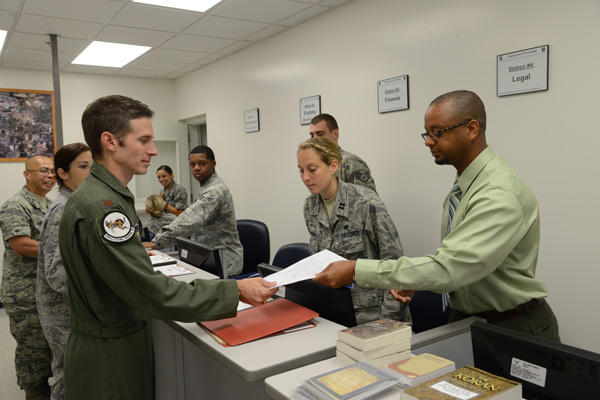Successfully streamlining processes across all locations is one of the goals of Joint Base San Antonio transformation.
For deployment readiness centers at JBSA-Lackland and JBSA-Randolph, that means a common deployment process with minimal effect on the customer, Stafford James, JBSA installation deployment officer, said.
"The goal is to have a common standardized deployment process for the entire JBSA enterprise," he said. "We're establishing a deployment process working group with mission partners to determine best practices and the best location to make sure the facility meets the needs of its customers."
Randolph's 27,820-square-foot Del Toro Deployment Readiness Center on the west flightline, which Curlie Alexander, alternate JBSA IDO, called "a one-stop shop" for deploying members, is now serving as the joint base's deployment headquarters - the installation deployment readiness cell, or IDRC.
"As we move to transformation," James said, "we're operating under one readiness cell while maintaining deployment capability and support at each location. We're trying to make it as streamlined as possible."
The Randolph facility, housed within Hangar 71 following a renovation more than three years ago, includes a state-of-the-art computer system, video cameras to monitor deployment processing, a suite of briefing rooms for deployers, a 10,000-square-foot area for mobility gear and a 3,200-square-foot vault for weapon and ammunition storage.
"The IDRC manages command and control for deployment operations, base support planning, support agreements and the Air Expeditionary Force Reporting Tool," Alexander said. "All our taskings flow from DCAPES - the Deliberate Crisis Action Planning Execution Segments computer system. With transformation, all the taskings will come here and will be dispersed to all locations."
Last year, facilities at Lackland and Randolph processed more than 2,100 deployers. With JBSA transformation, the process now includes providing support to JBSA-Fort Sam Houston.
"We're working with our Army partners at Fort Sam Houston," James said. "Right now we're working with them in pre-deployment planning for cargo movement requirements."
Expertise and precision are required at each step of the deployment process.
"A lot of experts make up our team, including logistics planners, personnelists and supply personnel," Alexander said. "We all have to make sure the deployer is discrepancy-free."
The most critical link in the deployment process is the unit deployment managers, or UDMs, who are assigned by their squadron commanders and undergo extensive training at the deployment readiness centers.
"They work with each deploying member to ensure they have completed their deployment readiness training and comply with all applicable reporting instructions," Alexander said. "It's a very important function in the entire process."
James said a JBSA installation deployment plan describing deployment operations is serving as a template for the process.
"We're moving toward a common deployment process to support JBSA deployment operations," he said. "It's a huge task."

















